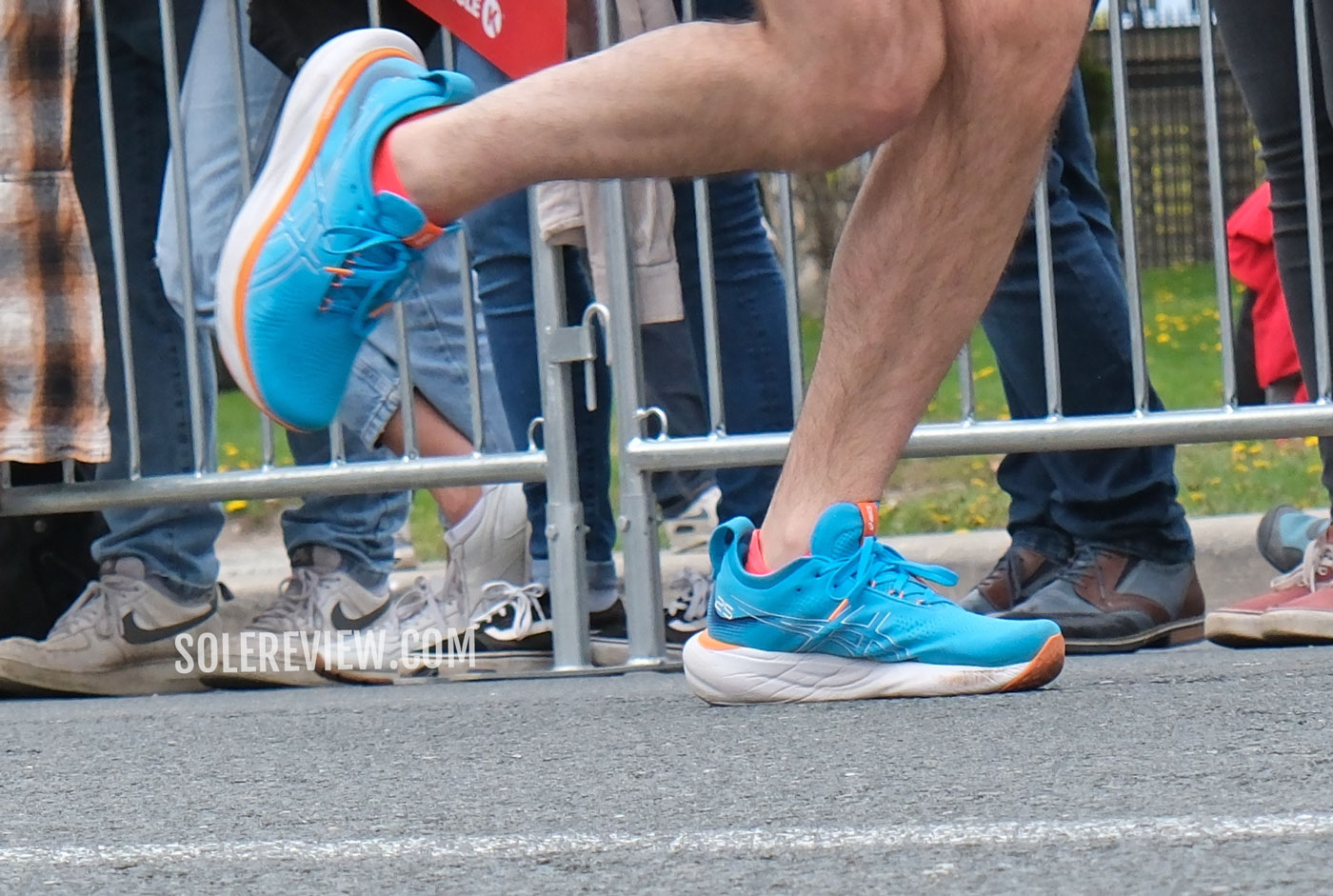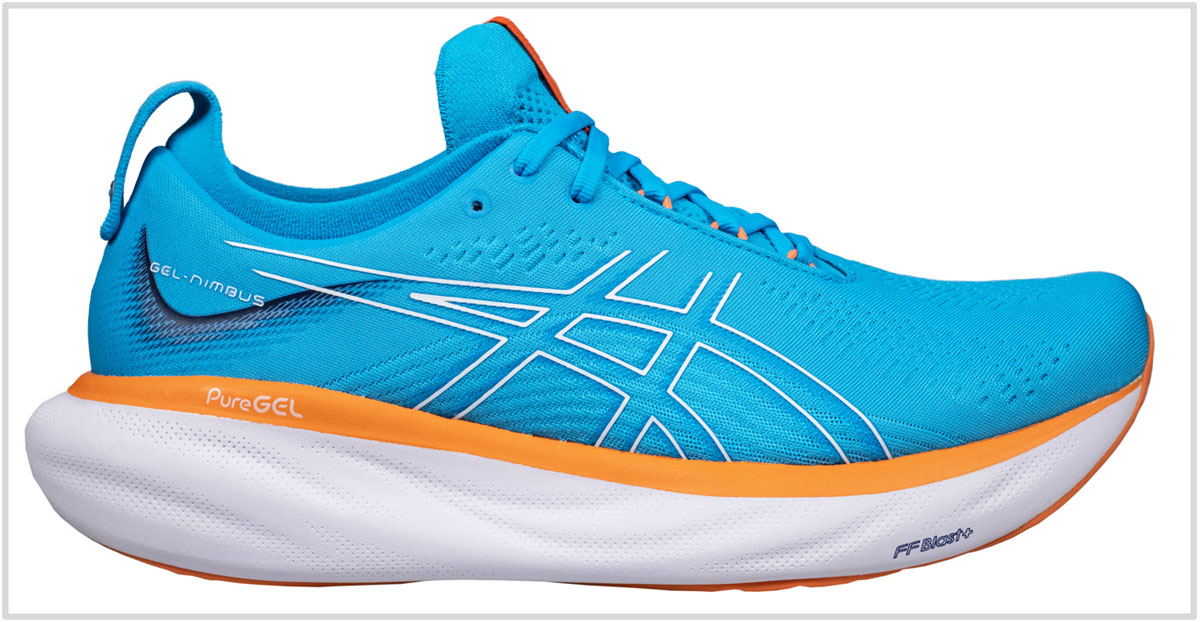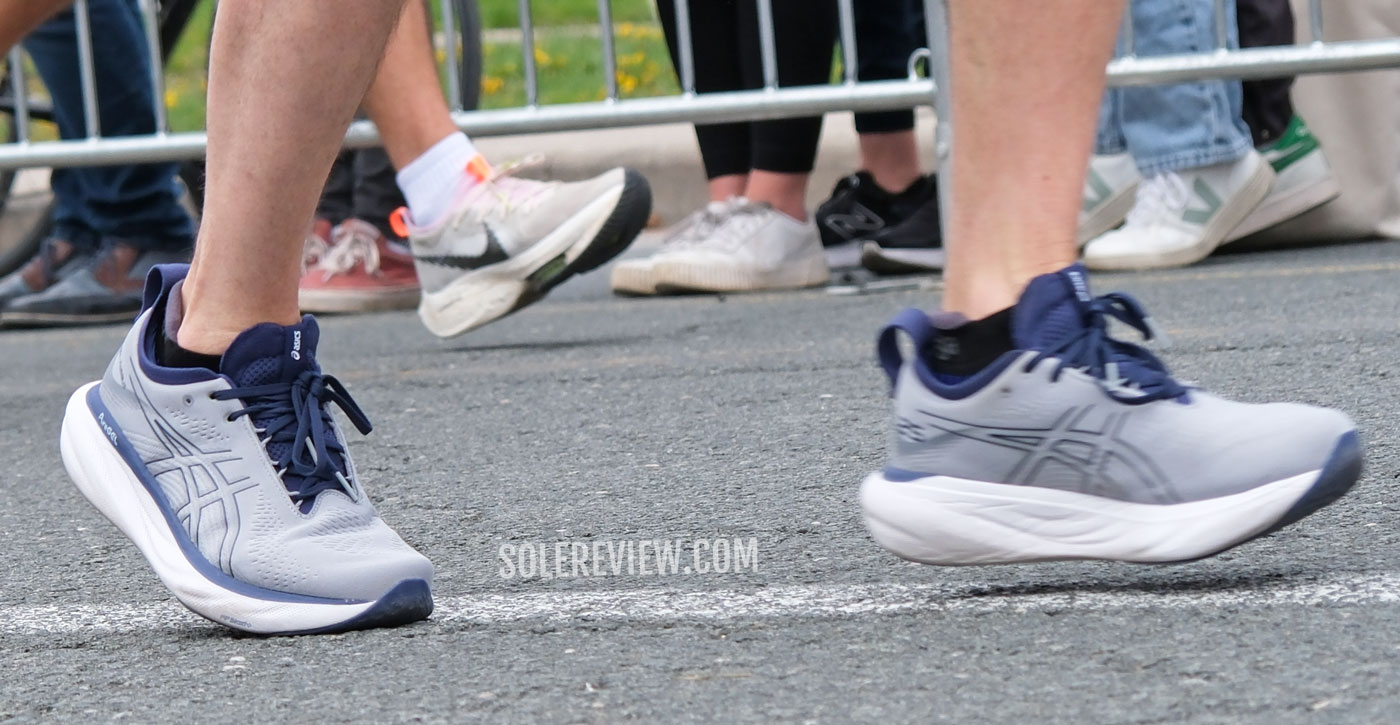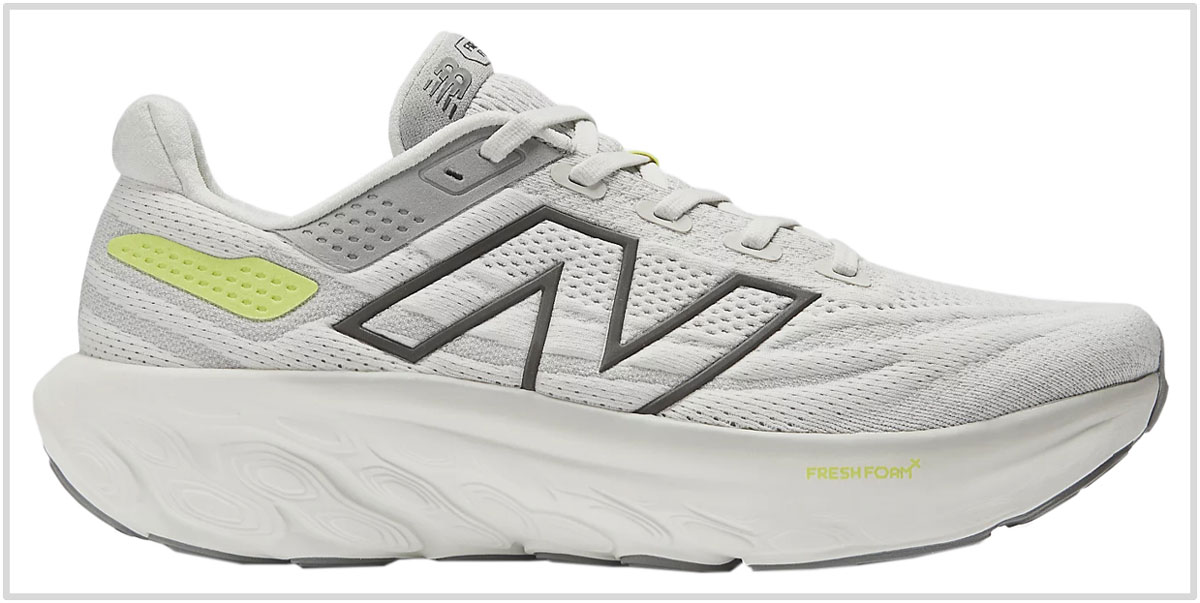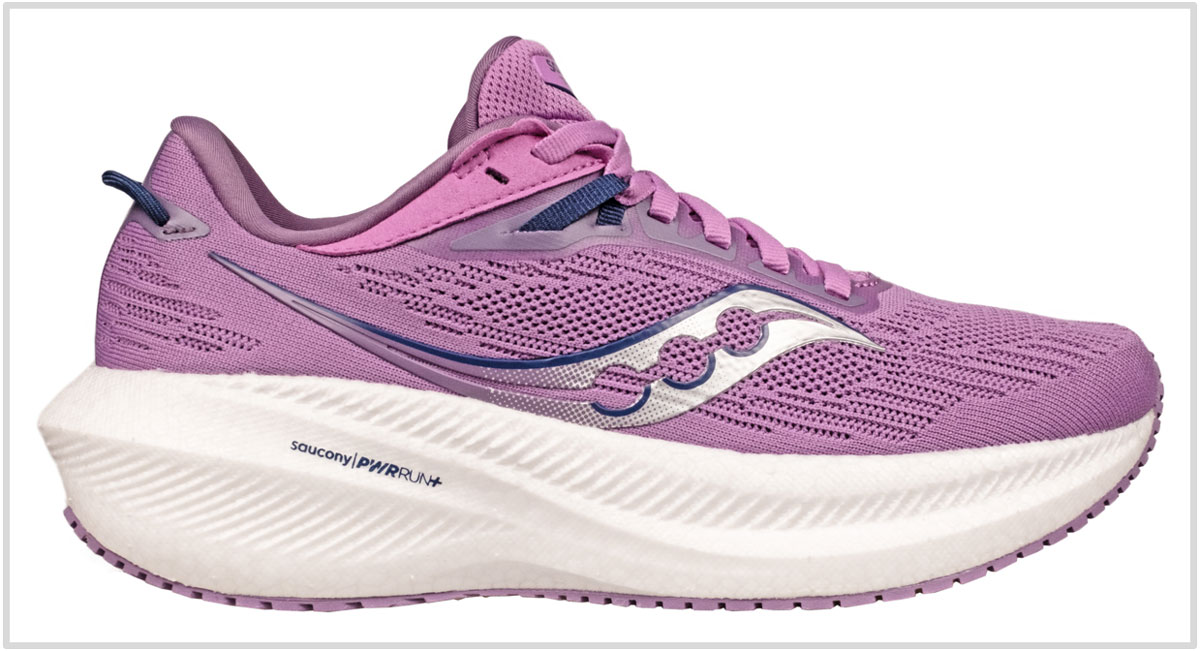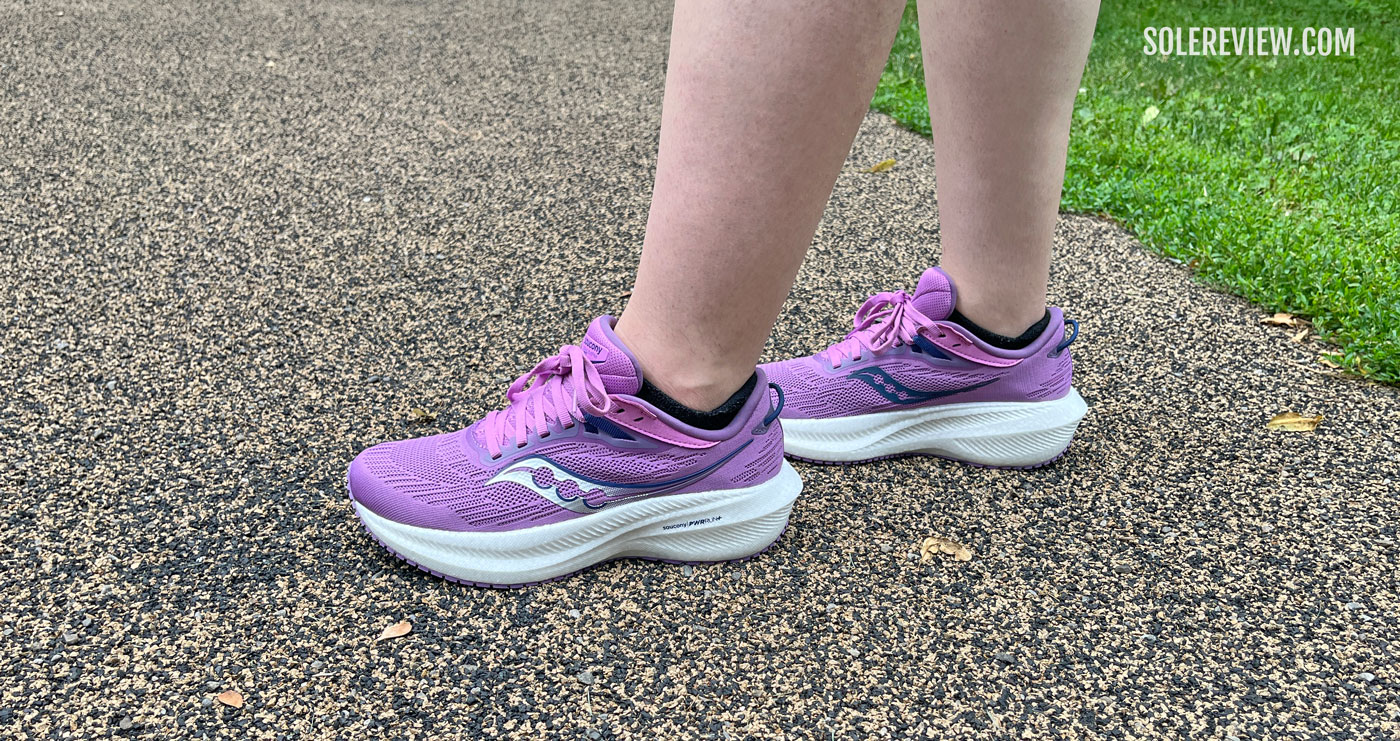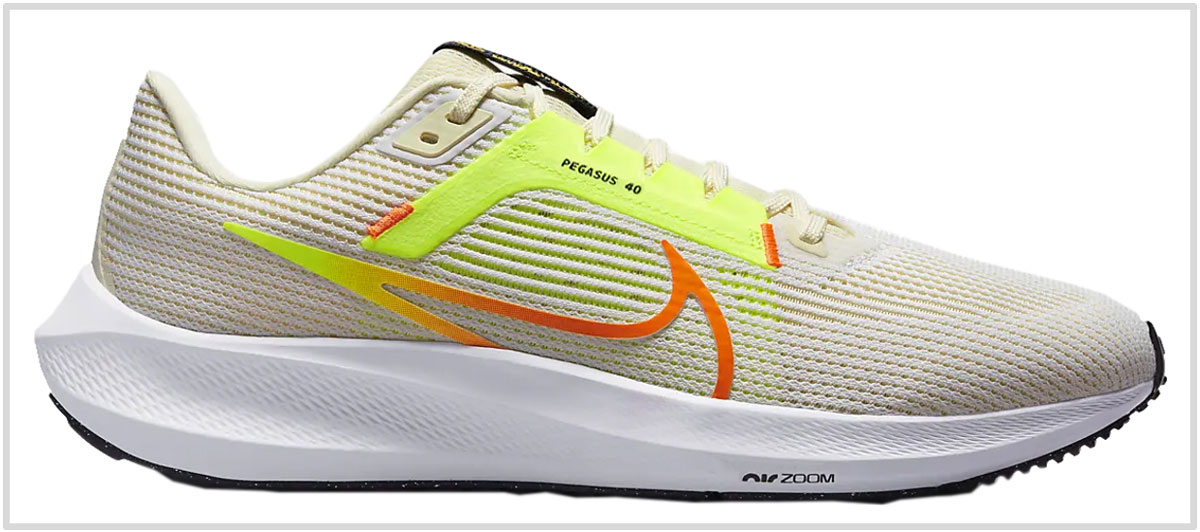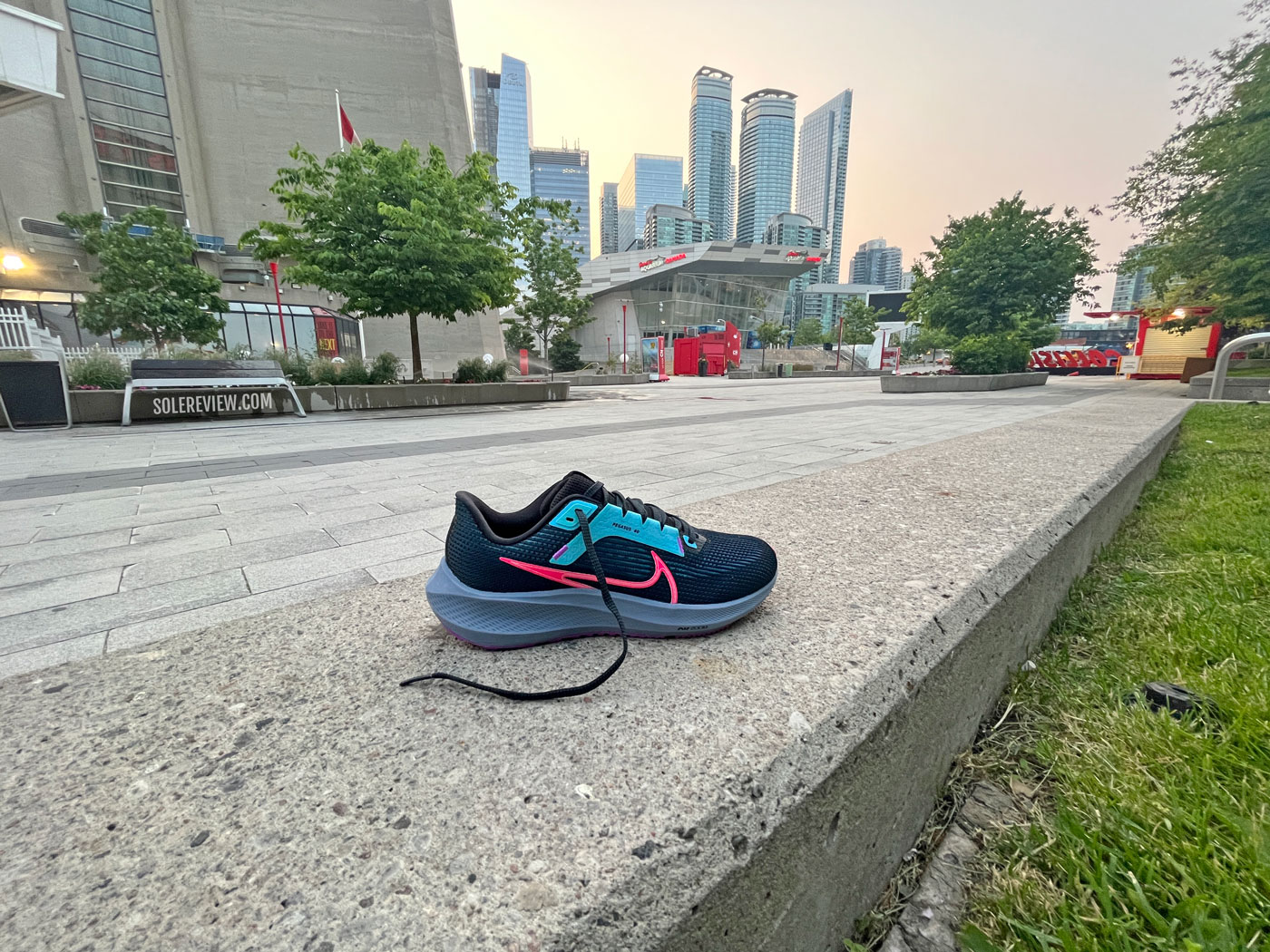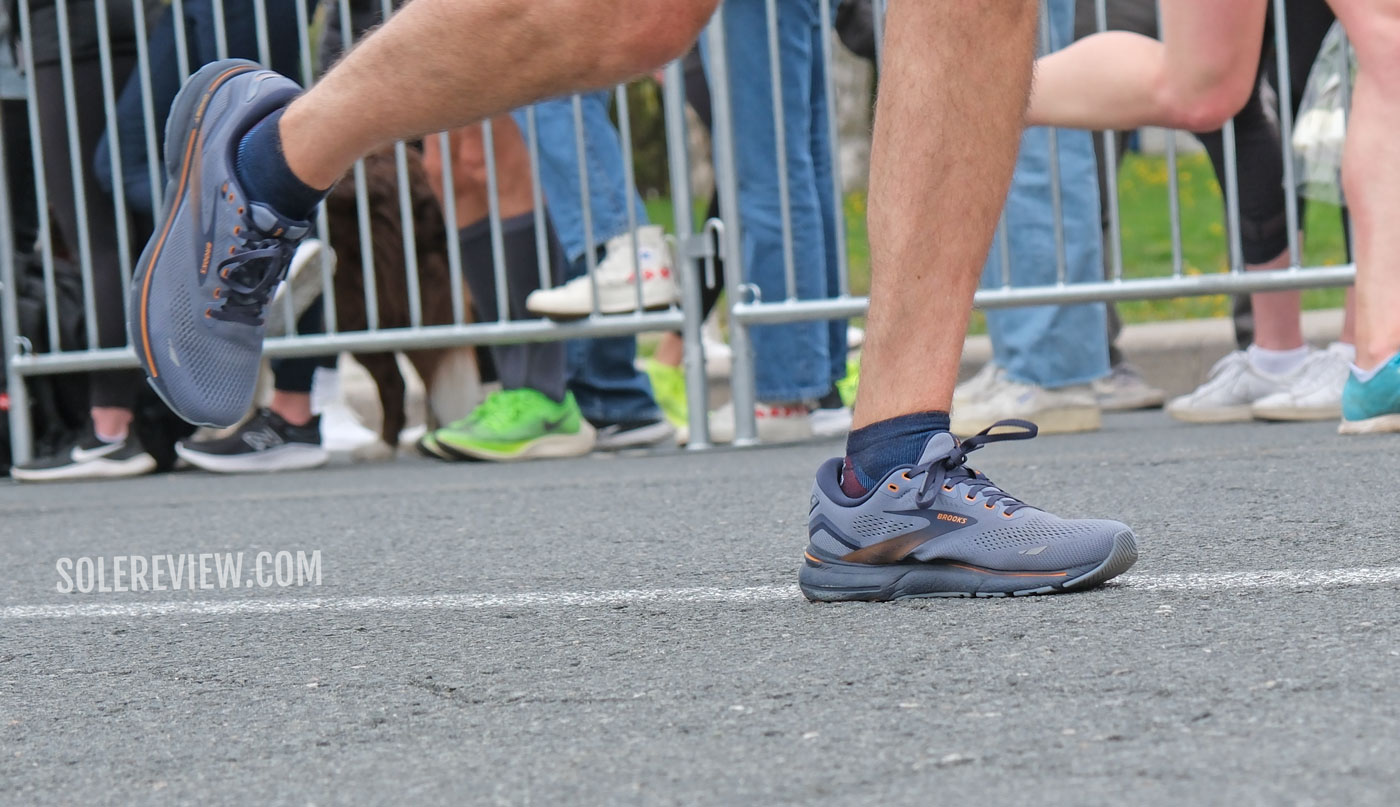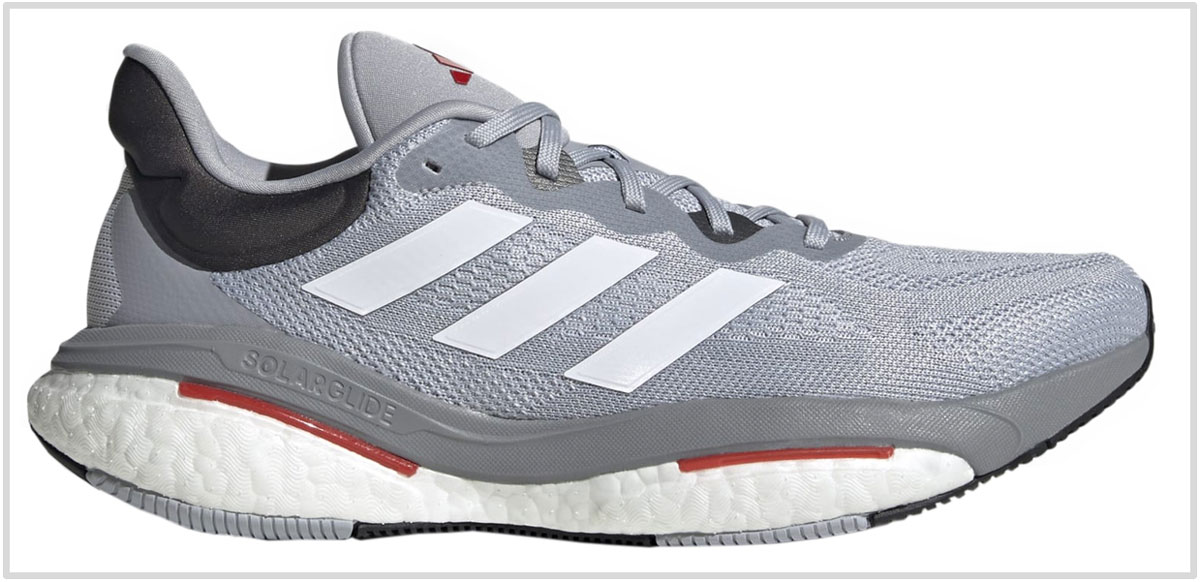This article has been updated with current models for November 2023. The New Balance 1080V12 has been replaced with its updated version. Except for the narrower ‘B’ width, the women’s models are almost identical to men’s.
In this product guide:
- 1. Factors to consider
- 2. Daily trainer with a soft ride: Asics Nimbus 25
- 3. Long-distance trainer with a soft ride: New Balance 1080 V13
- 4. Long-distance cushioned trainer: Saucony Triumph 21
- 5. Long-distance trainer with a cushioned ride: Hoka Clifton 9
- 6. Long-distance trainer with a supportive ride: Brooks Glycerin 20
- 7. Long-distance trainer with a supportive ride: Nike Pegasus 40
- 8. Daily trainer with a supportive ride: Brooks Ghost 15
- 9. Daily trainer with a supportive ride: Nike Structure 25
- 10. Daily trainer with a stable ride: adidas Solarglide 6
There are a couple of common misconceptions about feet with high arches.
The first assumes that all runners with high arches – also known as Pes Cavus – supinate or roll outwards during running or walking. Supination is also called under-pronation, the opposite of over-pronation.
That assumption isn’t necessarily true. Under certain circumstances, a high-arched foot will also pronate.
It is also assumed that high arches do not require footwear with arch support. That assumption is also misplaced.
Under normal circumstances, the arch is meant to help absorb the shock and stabilize the body. So a high arch will redistribute the loading stress to the forefoot and heel.
So in theory, having adequate under-arch support and midsole cushioning makes the loading process safer.
While many running shoes have a supportive midsole along with under-arch support, it may be a good idea to get a custom orthotic or an aftermarket insole. If that’s the route you want to take, read our buyer’s guide on orthotic-friendly shoes.
The running shoes that feature in this guide do two things very well.
They have a cushioned ride that makes landings and transitions go easy on your feet and the arch. At the same time, they aren’t overly structured and do not overcorrect the gait.
The terms ‘cushioned’ and ‘softest’ are often conflated, but these aren’t the same thing. Excessive softness can cause a shoe to be unstable – and that is not good regardless of the arch type.
However, if you want a really soft shoe, give the Nike Invincible 3 a try. It won’t go fast, but it is lightweight with soft and deep cushioning. Here’s our detailed review of that shoe.
None of the models recommended in this guide are excessively soft. Rather, these shoes combine impact-absorbing cushioning with a supportive ride.
Most of them do well in the under-arch support department, but it’s a good idea to get an aftermarket insole for an optimal ride experience.
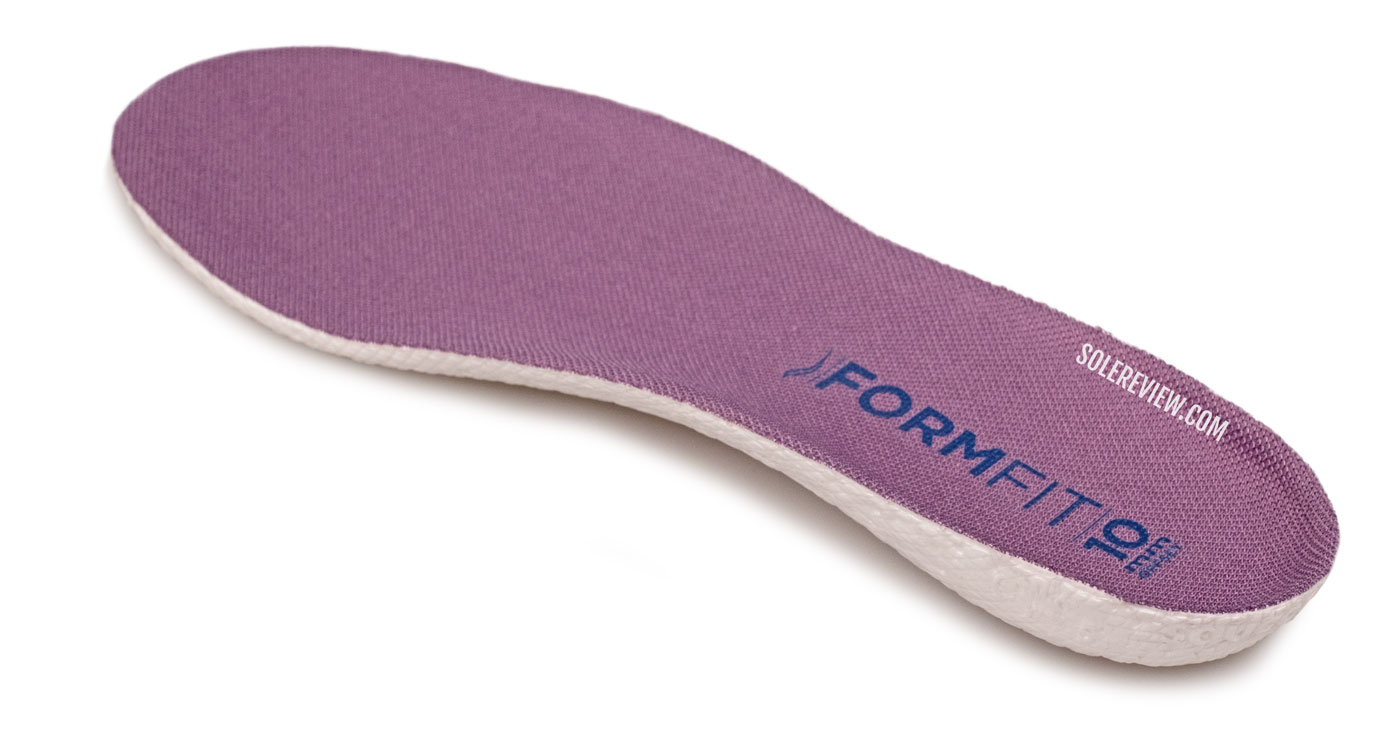
The Saucony Triumph 21’s insole is made of Pwrrun+ E-TPU foam. It’s thick enough to be replaced by a stability Orthotic.
Recent updates to shoes like the Saucony Triumph make them orthotic-friendly. The thick expanded Polyurethane footbed can be removed to accommodate a custom insole.
If your high arches are a source of pain or discomfort, please visit a physiotherapist before reading this shoe guide.
1) Asics Nimbus 25
Okay, let’s address the elephant in the room that is the Nimbus 25’s upper fit. It’s narrower than the previous version, and much warmer too – making it a no-go for long runs during summer.
With that of the way, let’s explain why the Nimbus 25 occupies the first spot on this list.
The overhauled Flytefoam midsole is unlike any other Nimbus model; the deep cushioning of the tall stack (41 mm and 33 mm) is supportive and free of any motion-control behavior.
The soft and responsive foam midsole allows the foot to load naturally, so that makes the Nimbus ideal for high-arched runners.
Unlike many soft running shoes, the Nimbus 25 has a pep in its cushioning. While the responsive Flytefoam Blast+ foam does what it can, the rocker shape of the midsole also helps the foot ‘tip’ forward. This new change in the ride quality improves the Nimbus 25’s versatility across different running speeds. Our review covered the nuanced ride quality of the new Nimbus in detail.
We view the Nimbus 25 as an excellent everyday trainer – if you can get past the warm upper, that is.
2) New Balance Fresh Foam 1080 V13
The 1080 V13’s high-volume midsole is ideal for running longer distances in cushioned comfort.
Making that possible is a soft midsole and a split outsole design that flexes together with the Fresh Foam stack. It’s not mushy though – just soft enough to be extremely comfortable, but minus the lazy feel. The V13 has been re-tooled from the ground up, so it’s much softer than the previous model – the 1080v12.
This midsole design delivers a very neutral ride experience without any motion-control effect – and that makes it a good fit for this list.
Though the upper no longer uses the stretchy mesh we saw on the 1080V12, the soft mesh shell hugs the foot without being either sloppy or constrictive. The 1080V13 does, however, run narrower than the 1080V12. The internal gusset holds the tongue in place. This shoe is also sold in narrow, wide, and extra-wide widths should you need one.
3) Saucony Triumph 21
Unlike the Endorphin models, the Triumph 21 doesn’t get a Pwrrun PB midsole – not just yet. It has the same midsole from the Saucony Triumph 20, meaning that there’s no change in the ride quality. The soft and lightweight Pwrrun+ foam delivers a high level of ride comfort and engagement.
Along with the deeper cushioning, the high-volume midsole is wide under the heel and forefoot. This makes the Triumph 21 a supportive running shoe, high arch or not.
This form factor appeals to runners of all classes for long-distance runs or everyday runs. The rubber outsole has a generous surface contact area for optimal traction and durability.
The visually clean exterior is comfortable and secure on the inside; the midfoot strapping system helps achieve a custom fit. Just know that the Saucony Triumph 21 gets a full sleeve instead of the Triumph 20’s partial gusset. This makes the upper tighter and warmer than before; our review has more.
4) Hoka Clifton 9
Hoka has the distinction of being the original ‘tall midsole’ brand, and the Clifton is one of its most popular ambassadors.
Unlike the bulkier Bondi 8, the Clifton 9 hits the sweet spot between versatile cushioning and lightweight build, thus making it suitable for a variety of use cases. The Clifton 9 is excellent for easy daily workouts and comfortable long-distance runs alike. Read our review here.
Its high-volume midsole produces a cushioned ride that feels agile and supportive. The credit goes to the wide base that creates a supportive foundation during runs. The rocker shape allows the foot to roll forward faster during the push-off phase.
The cushioned neutral-ness of the Clifton 9 makes it a worthy pick for most runners, regardless of foot-strike or gait patterns. Barring a few updates, the Clifton 9 is fairly similar to the Clifton 8, a shoe that we reviewed last year.
The comfortable upper of the Clifton 9 is a bonus. The updated mesh material is softer for improved interior comfort.
5) Brooks Glycerin 20
The Glycerin has been Brooks’s neutral running staple for nearly two decades. Its balanced ride is one of the reasons why it’s been around for such a long time.
And that hasn’t changed, even though the Glycerin 20 has a brand-new midsole that’s made of DNA Loft V3.
It’s a material that’s similar to the kind used on the Hyperion Tempo, but softer and somewhat heavier. For perspective, our US 11 Glycerin weighs over 11 ounces. Our comprehensive review takes a closer look at the Glycerin 20’s ride character.
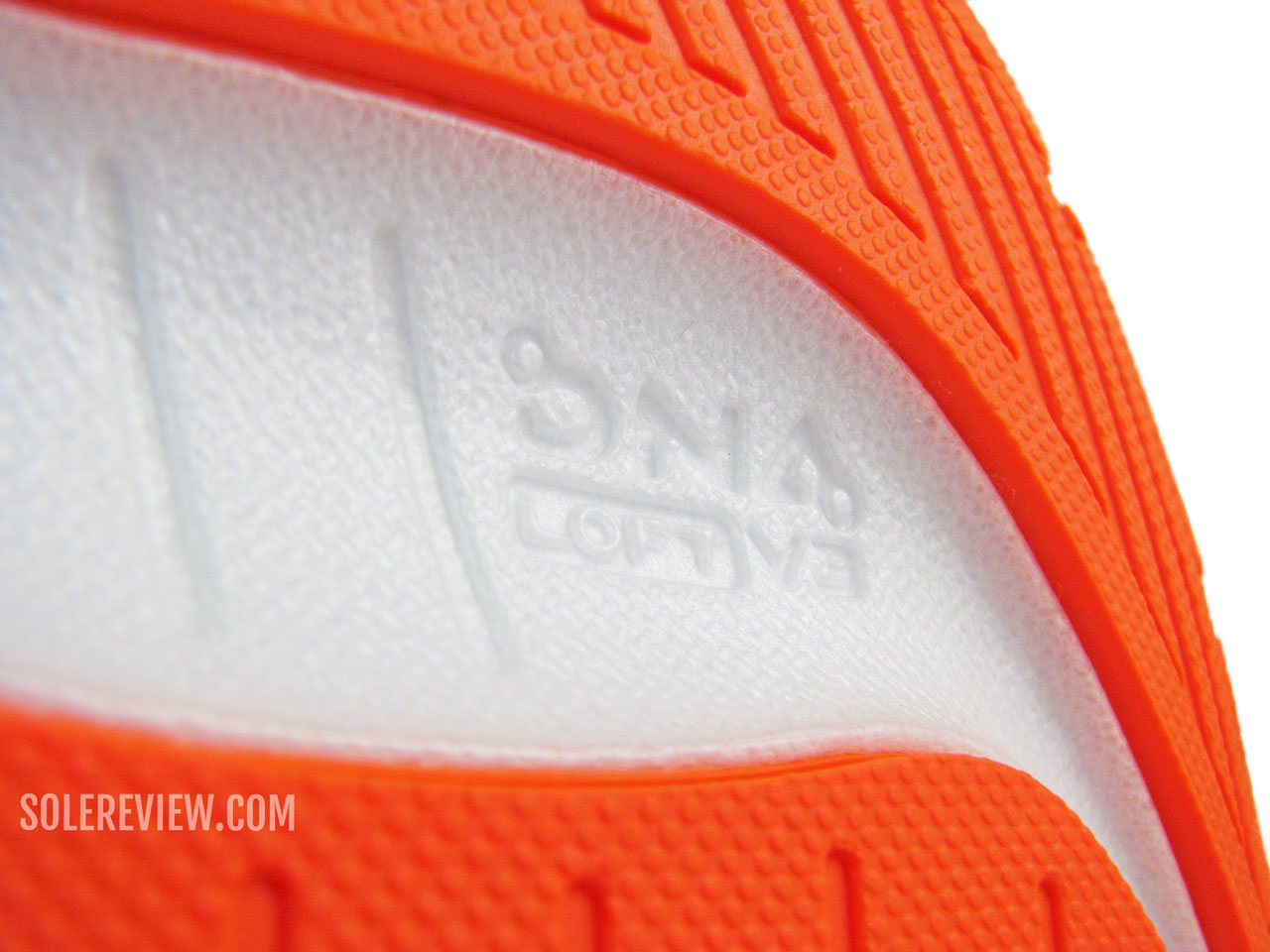
The DNA Loft V3 foam isn’t super soft. But as a whole, the supportive midsole is great for all arch types.

The ride isn’t super-soft or super-plush as Brooks’ marketing would have you believe. When compared to truly soft shoes like the New Balance 1080, the midsole is still in the medium-soft territory. The full-contact outsole fills in the transitional gaps for a smooth ride.
This ride behavior makes it suitable for most runners looking for a daily driver – high-arched or not.
It’s worth noting that the Glycerin 20 does not have an inner sleeve as the Glycerin 19 did. As a result, the interiors are more spacious and breathable than the outgoing model.
Also, the Glycerin 20 GTS is worth considering.
It’s nearly the same shoe as the Glycerin but with raised midsole sidewalls, aka the Guiderails. It’s worth mentioning that the Stealthfit variant has a bootie upper with a lower heel padding position. Though it’s a matter of personal taste, we prefer the upper fit of the standard Glycerin 20.
6) Nike Pegasus 40
The ’40’ in the shoe stands for 40 years – that’s how long the Pegasus has been around. This model has existed in many variations (there was once even a Max Air version), but this long-continuing franchise has stood the test of time.
There’s a good reason why the Pegasus has survived four decades. It’s not excellent in one way or the other, but has a versatile character that works for most runners, regardless of their experience level.
Even though the midsole isn’t high-tech by contemporary standards, it does a decent job of balancing ride comfort with neutral support. The forefoot and heel Zoom Air bags add a bit of pep and stability, whereas the foam midsole makes the Pegasus 40 comfortable enough for up to a half-marathon. If you’re interested, our review has more.
These components work together to produce a ride character that works for most runners, regardless of how their arch is shaped. Just like the Pegasus 39, the Pegasus 40’s upper is fully sleeved, so you can expect the same fit security as the previous model. The upper runs true to size.
7) Brooks Ghost 15
In our review, we called the Brooks Ghost 15 a ‘Vanilla’ shoe. And it’s true. The Ghost 15 is a please-all, do-everything running shoe that offers something to everyone.
For example, if you’re a high-arched runner, the neutral and supportive midsole doesn’t get in your way. The EVA foam blend offers a consistent cushioning experience without any bias; this also applies to heavier runners with high arches.
Just know that the Brooks Ghost 15 isn’t particularly soft by modern standards, nor is it springy. The EVA foam-blend midsole doesn’t have a rocker forefoot either. It’s best used for medium paces (5:00 min/km, 8 min/mile and slower) for daily miles and runs that are 10K and shorter.
The Ghost 15’s upper has excellent proportions. The toe box fits just right, and the forefoot secures the foot without creating a pressure hot spot. There’s just one thing – the upper doesn’t have a sleeve, as many trainers in this segment do.
8) Nike Zoom Structure 25
Many years ago, if someone told us that the Nike Zoom Structure would feature on this guide one day, we would have been very surprised.
After all, the Structure used to be Nike’s most popular ‘stability’ shoe with a medial post – not exactly the kind of shoe that’s in the same class as neutral trainers.
However, the Structure we once knew no longer exists. In its place is a cushioned neutral shoe with a balanced ride and plush upper. The brand-new Structure 25 arrived recently, and just like the Structure 23 and 24, there are no ‘stability’ devices that try to alter the gait process.
For this year, the Structure 25 has a raised midsole sidewall under the arch. Nike calls this the midfoot support system – it’s a nice placebo, but its efficacy is debatable. As this under-arch support does not interfere with the motion path, the Structure 25 works for runners with high arches.
The midsole uses similar ingredients as the Pegasus 40, so the ride quality feels similar. The front and rear Zoom Air bags add some pop and support, whereas the EVA blend foam delivers everyday cushioning.
The true-to-size upper is standard Nike fare – the Structure uses an inner sleeve with speed loops for a secure and comfortable fit.
9) adidas SolarGlide 6
The Solarglide 6 uses the same midsole and outsole, so nothing has changed from a ride viewpoint. Just like the last model, the LEP shank forms a supportive ‘wing’ over the forefoot and heel.
The sleeve-free upper is breathable and smooth on the inside.
Having said that, there are several reasons why the Solarglide 6 is an excellent pick for high-arched runners. Helpful features, such as the removable insole, cups the foot on either side.
The high-volume Boost midsole adds plenty of cushioning that doesn’t interfere with the inward roll of the foot. It’s also very stable, thanks to the extension of the LEP shank over the midsole.
Do you own any of these shoes? Improve this review by sharing your insights – submit a review here.

